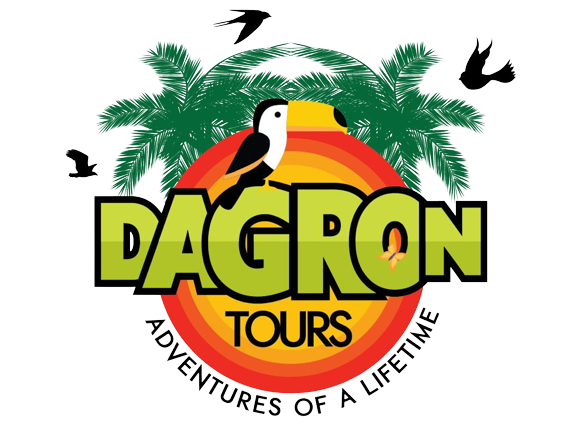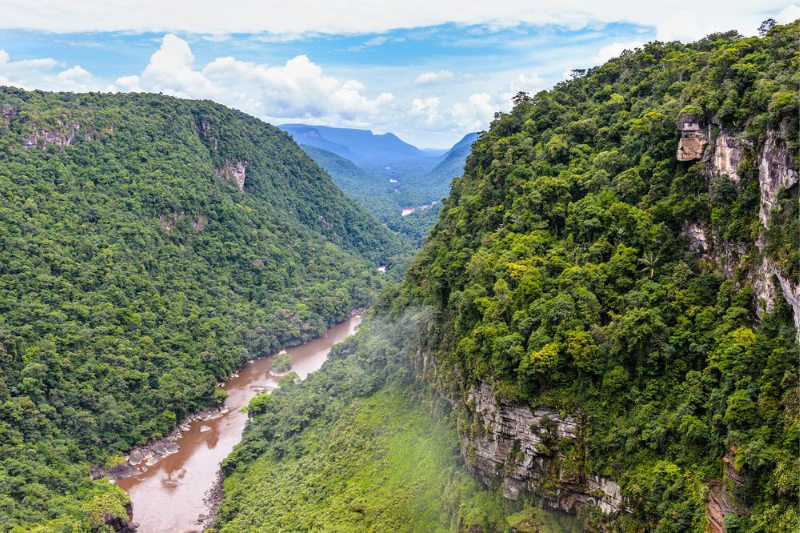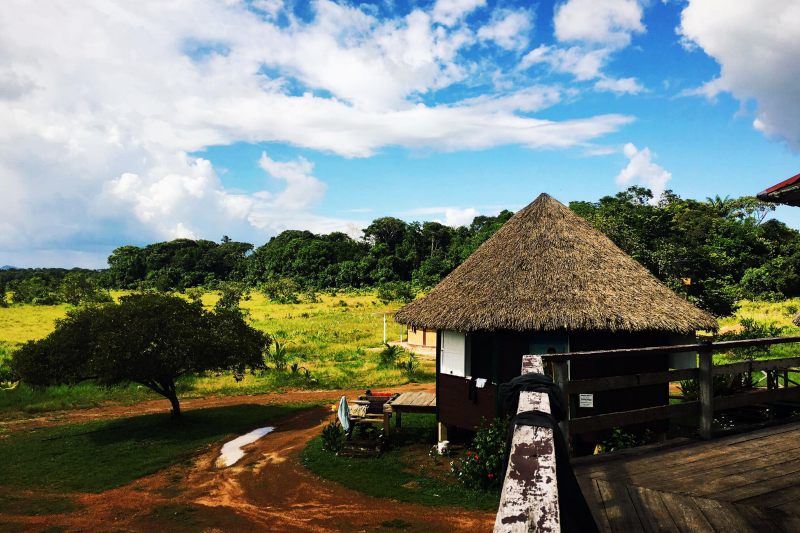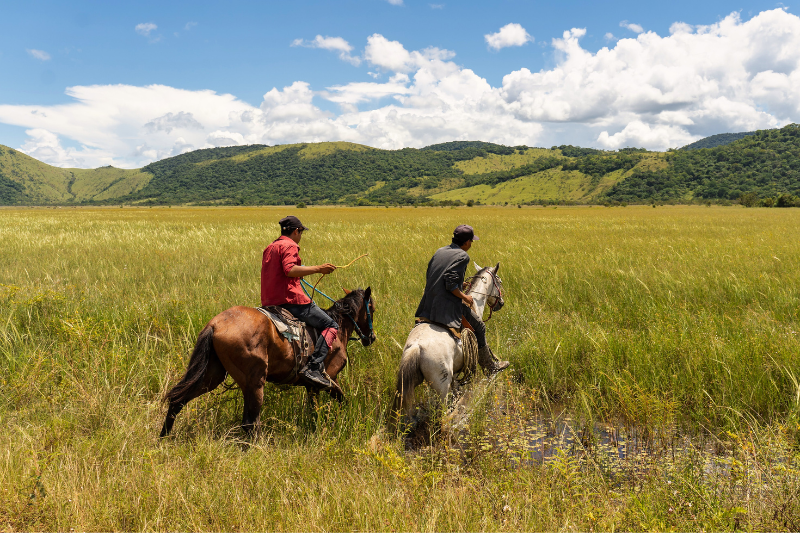- Overview
- Trip Outline
- Trip Includes
- Trip Excludes
- Gallery
- Booking
- FAQ
Kaieteur Falls overnight trip: An unforgettable Guyana rainforest adventure
If you're seeking a memorable escape, the Kaieteur Falls overnight trip offers an extraordinary experience in the heart of the Guyana rainforest. This guided tour brings together the thrill of adventure with the awe of nature, giving you a front-row seat to the majestic Kaieteur Falls—one of the most powerful waterfalls in the world. Here’s everything you need to know about this enchanting journey.
Experience the wonder of Kaieteur Falls
This Kaieteur Falls tour takes you deep into the untouched Kaieteur National Park, where lush rainforest, rare wildlife, and awe-inspiring landscapes come together. Standing at a staggering 741 feet, Kaieteur Falls is almost five times the height of Niagara Falls, making it a true natural wonder. The falls drop in a powerful single cascade, sending up mist that blankets the surrounding landscape. The sight and sound of the falls are both humbling and exhilarating, making this trip a must for anyone seeking a genuine connection with nature.
During the tour, you'll encounter:
- Exotic wildlife like the cock-of-the-rock, golden frogs, and rare bird species.
- Tropical plants including orchids, bromeliads, and lush vegetation unique to this ecosystem.
- Breathtaking landscapes perfect for photography, surrounded by pristine rainforest untouched by development.
This natural paradise is ideal for nature enthusiasts and photographers looking to capture some of the world's most beautiful scenery.
A pristine, untouched natural setting
The highlight of the Kaieteur Falls overnight trip is, of course, the waterfall itself. Beyond its sheer height and power, Kaieteur Falls is unique because it is surrounded by an unspoiled rainforest, free from modern infrastructure. This natural setting makes it one of the most beautiful and unspoiled waterfalls in the world, allowing visitors to enjoy a peaceful, immersive experience without crowds or urban noise.
Sunset views and a night under the stars
One of the most magical moments of this tour is watching the sun set over Kaieteur Falls. As the daylight fades, the falls glow in golden hues, creating a scene that feels almost otherworldly. This is an ideal time for photographers, as the soft light enhances the beauty of the falls.
After sunset, you’ll settle in for a night beneath the stars:
- Stargazing opportunities far from city lights, with a dazzling view of the night sky.
- Natural sounds of the rainforest creating a calming, peaceful atmosphere.
- Comfortable sleeping arrangements under a canopy of stars, perfect for a restful night’s sleep.
Wake up refreshed and ready to continue your Guyana rainforest adventure with a rejuvenating morning at Kaieteur Falls.
Discover the legend and history of Kaieteur Falls
The name Kaieteur honours Chief Kai, a legendary figure from the Patamona tribe. According to local folklore, Chief Kai sacrificed himself by canoeing over the falls to protect his people from invading forces. This act of bravery and selflessness has cemented Kai’s name in local legend, and today, Kaieteur Falls stands as a symbol of resilience and cultural pride for the people of Guyana.
Highlights of Kaieteur National Park:
- Protected since 1929 as one of Latin America’s first national parks.
- Biodiversity hotspot, with rare species of plants and animals.
- Cultural significance due to the legendary story of Chief Kai, adding depth to the natural beauty.
The park not only protects Kaieteur Falls but also preserves the surrounding rainforest’s unique ecosystems for future generations.
Book your Kaieteur Falls overnight trip today
The Kaieteur Falls overnight trip is a one-of-a-kind experience that combines breathtaking scenery, cultural heritage, and the thrill of adventure. From the powerful beauty of Kaieteur Falls to serene rainforest nights, this tour offers memories that will last a lifetime. Whether you’re a solo traveller, a couple, or a group of nature lovers, this Guyana waterfall tour will leave you captivated by the wonders of the Guyana rainforest.
Embark on this adventure and let the magic of Kaieteur Falls and Guyana’s pristine landscapes create an unforgettable journey. Witness the power of nature, immerse yourself in the beauty of the rainforest, and experience a side of Guyana that few travellers have the chance to see.
Kaieteur falls overnight trip: An unforgettable night at the Kaieteur nature park is worth having! This tour will give you that!
This tour and prices are subject to availability.
Departure is every Saturday, and booking in advance is necessary.
Itineraries
Day 1
Fly to Kaieteur Falls
Depart at 11:45 a.m. from your hotel/home for check-in. You depart the airport at 1:00 p.m. You will fly over vast rainforests and small patches of mining camps. Before landing, you will enjoy an aerial view of the falls, which allows you to take photos, so have your cameras out for that perfect shot!
At Kaieteur falls, you will meet our professionally trained national park guide, who will show us the great wonders at the falls. The tour includes hikes around the falls to various locations and areas where we will get fantastic views of the waterfall. You will learn about the
, see the poison frog living in large tank bromeliads and many birds, which you can find here.
Meals: Lunch, Dinner
Overnight at Kaieteur Guest House
Day 2
Discovery the Falls/Return to Georgetown
At dawn, birding. Return to the Guest house for breakfast.
Enjoy a tour of the surrounding areas looking for the rarely seen Guianan Cock-of-the-rock and other species found in the park.
Check-in for the flight and depart at 4:00 p.m. Arrive in Georgetown at 5:00 -5:30 p.m. Breakfast and lunch are provided.
Price Includes Accommodation, internal flights, transfers between airports and hotels, listed hotels and hotel taxes, activities as described and admission charges where applicable, river and land transfers, listed lodges with full board and other meals as indicated. local guides, local beverages.
Price Excludes International airfare, airport/departure taxes, gratuities, optional excursions, and travel insurance.
No Details Found








